 W
WThe second USS Ardent (AM-340) was a Auk-class minesweeper in the United States Navy.
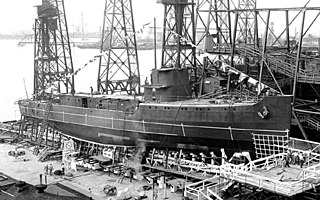 W
WUSS Auk (AM-57) was an Auk-class minesweeper acquired by the United States Navy for the dangerous task of removing mines from minefields laid in the water to prevent ships from passing.
 W
WUSS Chief (AM-315) was an Auk-class minesweeper acquired by the United States Navy for the dangerous task of removing mines from minefields laid in the water to prevent ships from passing, and named after the word "chief," the head or leader of a group.
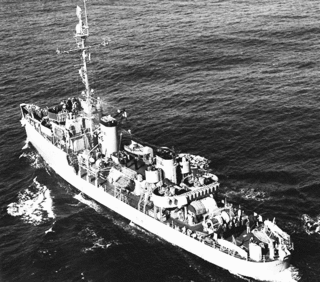 W
WUSS Defense (AM-317) was an Auk-class minesweeper acquired by the United States Navy for the dangerous task of removing mines from minefields laid in the water to prevent ships from passing.
 W
WUSS Devastator (AM-318) was an Auk-class minesweeper acquired by the U.S. Navy for the dangerous task of removing naval mines from minefields laid in the water to prevent ships from passing.
 W
WUSS Gladiator (AM-319) was an Auk-class minesweeper acquired by the U.S. Navy for the dangerous task of removing mines from minefields laid in the water to prevent ships from passing.
 W
WUSS Herald (AM-101) was an Auk-class minesweeper acquired by the United States Navy for the dangerous task of removing mines from minefields laid in the water to prevent ships from passing.
 W
WUSS Impeccable (AM-320) was an Auk-class minesweeper built for the United States Navy during World War II. She was originally ordered as HMS Brutus (BAM-7) for the United Kingdom's Royal Navy under Lend-Lease, but was acquired and renamed by the United States Navy before construction began. She was commissioned in 1944 and served in the Pacific before being decommissioned in 1947. After the outbreak of hostilities in Korea, Impeccable was recommissioned in 1952 and served off Korea through 1952. She was decommissioned for the final time in October 1955 and placed in reserve. She was sold for scrapping in 1974.
 W
WUSS Murrelet (AM-372) was an Auk-class minesweeper acquired by the United States Navy to remove mines from minefields laid to prevent ships from passing. She was the only U.S. Navy ship named for the murrelet, a small sea bird found chiefly on islands in the northern Pacific Ocean.
 W
WUSS Peregrine (AM-373) was an Auk-class minesweeper built for the United States Navy for the dangerous task of removing mines from minefields laid in the water to prevent ships from passing. She was named after the peregrine, a swift and powerful falcon.
 W
WUSS Pheasant (AM-61/MSF-61) was an Auk-class minesweeper named after the Pheasant, a large game bird found in the United States and other countries. Pheasant was laid down on 22 July 1942 at the Defoe Shipbuilding Company in Bay City, Michigan; launched on 24 October 1942, sponsored by Mrs. Harry J. Defoe, wife of the shipyard owner; and commissioned on 12 December 1942, with Lieutenant Commander John B. Burnham in command.
 W
WUSS Pioneer (AM-105) was an Auk-class minesweeper acquired by the United States Navy for the dangerous task of removing mines from minefields laid in the water to prevent ships from passing.
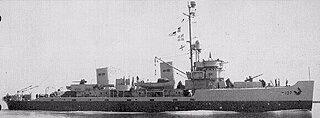 W
WUSS Prevail (AM-107) was an Auk-class minesweeper acquired by the United States Navy for the dangerous task of removing mines from minefields laid in the water to prevent ships from passing.
 W
WUSS Pursuit (AM-108) was an Auk-class minesweeper acquired by the United States Navy for the dangerous task of removing mines from minefields laid in the water to prevent ships from passing.
 W
WUSS Redstart (AM-378/MSF-378) was an Auk-class minesweeper commissioned by the United States Navy for service in World War II. Her task, as a fleet minesweeper, was to clear mines as the fleet proceeded into battle areas.
 W
WUSS Requisite (AM-109) was an Auk-class minesweeper acquired by the United States Navy for the dangerous task of removing mines from minefields laid in the water to prevent ships from passing.
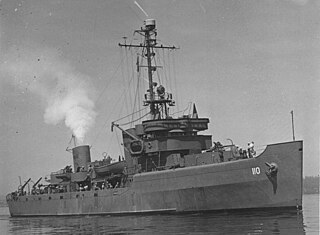 W
WUSS Revenge (AM-110) was a World War II-era Auk-class minesweeper in the service of the United States Navy. It was the sixth United States vessel named Revenge.
 W
WUSS Ruddy (AM-380) was an Auk-class minesweeper acquired by the U.S. Navy for the dangerous task of removing mines from minefields laid in the water to prevent ships from passing. She was the only U.S. Navy ship named for the North American ruddy duck.
 W
WUSS Seer (AM-112/MSF-112/MMC-5) was an Auk-class minesweeper of the United States Navy that served during World War II and the Korean War, and was sold to Norway in 1962.
 W
WUSS Sentinel (AM-113) was an Auk-class minesweeper built for the United States Navy during World War II; she was the third U.S. Naval vessel to bear the name. It was laid down on 28 November 1941 by the American Ship Building Company, Cleveland, Ohio; launched on 23 May 1942; and commissioned on 3 November 1942, Lt. Comdr. George Lincoln Phillips, USNR, in command.
 W
WUSS Sheldrake (AM-62/AGS-19) was an Auk-class minesweeper built for the United States Navy during World War II. The ship was named after the sheldrake duck. The ship earned four battle stars during World War II. She was converted to a survey ship and re-designated AGS-19 in 1952 and remained in commission until 1968. She was sold for scrap in 1971.
 W
WUSS Shoveler (AM-382) was an Auk-class minesweeper acquired by the U.S. Navy for the dangerous task of removing mines from minefields laid in the water to prevent ships from passing.
 W
WUSS Speed (AM-116) was an Auk-class minesweeper acquired by the United States Navy for the dangerous task of removing mines from minefields laid in the water to prevent ships from passing.
 W
WUSS Sprig (AM-384) was an Auk-class minesweeper acquired by the United States Navy for the dangerous task of removing mines from minefields laid in the water to prevent ships from passing.
 W
WUSS Staff (AM-114) was an Auk-class minesweeper acquired by the United States Navy for the dangerous task of removing mines from minefields laid in the water to prevent ships from passing.
 W
WUSS Starling (AM-64) was an Auk-class minesweeper acquired by the United States Navy for the dangerous task of removing mines from minefields laid in the water to prevent ships from passing.
 W
WUSS Steady (AM-118) was an Auk-class minesweeper acquired by the United States Navy for the dangerous task of removing mines from minefields laid in the water to prevent ships from passing.
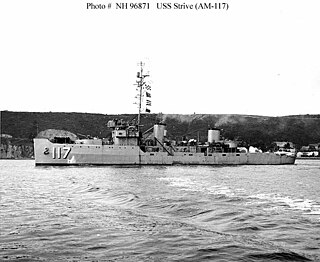 W
WUSS Strive (AM-117) was an Auk-class minesweeper acquired by the United States Navy for the dangerous task of removing mines from minefields laid in the water to prevent ships from passing.
 W
WUSS Surfbird (AM-383) was an Auk-class minesweeper built during World War II for the United States Navy. She was the only U.S. Navy ship named for the surfbird.
 W
WUSS Sustain (AM-119) was an Auk-class minesweeper acquired by the United States Navy for the dangerous task of removing mines from minefields laid in the water to prevent ships from passing.
 W
WUSS Swallow (AM-65) was an Auk-class minesweeper built for the United States Navy during World War II. The ship was the second U.S. Navy ship named after the swallow. Swallow earned two battle stars for World War II service. She was sunk by a kamikaze aircraft off Okinawa on 22 April 1945. She was struck from the Naval Vessel Register on 2 June 1945.
 W
WUSS Swerve (AM-121) was an Auk-class minesweeper acquired by the United States Navy for the dangerous task of removing mines from minefields laid in the water to prevent ships from passing.
 W
WUSS Tercel (AM-386) was an Auk-class minesweeper acquired by the United States Navy for the dangerous task of removing mines from minefields laid in the water to prevent ships from passing.
 W
WUSS Threat (AM-124) was an Auk-class minesweeper acquired by the United States Navy for the dangerous task of removing mines from minefields laid in the water to prevent ships from passing.
 W
WUSS Tide (AM-125) was an Auk-class minesweeper acquired by the United States Navy for the dangerous task of removing mines from minefields laid in the water to prevent ships from passing.
 W
WUSS Toucan (AM-387) was an Auk-class minesweeper acquired by the United States Navy for the dangerous task of removing mines from minefields laid in the water to prevent ships from passing. She was the only U.S. Navy ship named for the toucan, a brightly colored and easily tamed bird of the American tropics, characterized by its large but thin beak.
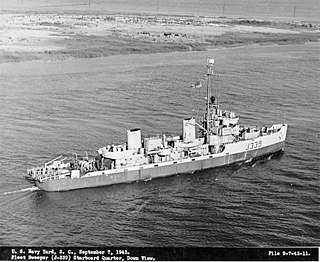 W
WHMS Tourmaline (J339) was a Catherine-class minesweeper of the Royal Navy during the Second World War. Originally planned as USS Usage (AM-130), of the United States Navy's Auk class, she was transferred to the United Kingdom under Lend-Lease.
 W
WUSS Towhee (AM-388) was an Auk-class minesweeper acquired by the United States Navy for the dangerous task of removing mines from minefields laid in the water to prevent ships from passing.
 W
WUSS Triumph (AM-323) was a World War II Auk-class minesweeper of the United States Navy.
 W
WHMS Tourmaline (J339) was a Catherine-class minesweeper of the Royal Navy during the Second World War. Originally planned as USS Usage (AM-130), of the United States Navy's Auk class, she was transferred to the United Kingdom under Lend-Lease.
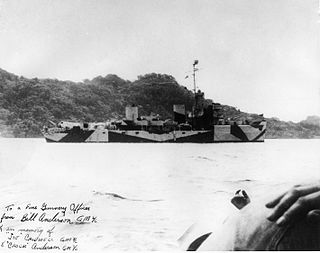 W
WUSS Velocity (AM-128) was an Auk-class minesweeper acquired by the United States Navy for the dangerous task of removing mines from minefields laid in the water to prevent ships from passing. She was the second warship to bear the name.
 W
WUSS Vigilance (AM-324) was an Auk-class minesweeper acquired by the United States Navy for the dangerous task of removing mines from minefields laid in the water to prevent ships from passing.
 W
WUSS Waxwing (AM-389) was an Auk-class minesweeper acquired by the United States Navy for the dangerous task of removing mines from minefields laid in the water to prevent ships from passing. She was the only U.S. Navy ship named for the waxwing, any of several American and Asiatic songbirds which are for the most part brown and are characterized by predominant crests and velvety plumage.
 W
WUSS Zeal (AM-131) was an Auk-class minesweeper that served in both World War II and during the Korean War. As a steel-hulled fleet minesweeper, she was assigned to support the fleet by removing enemy mines whose purpose was to impede the path of the U.S. Pacific Fleet.